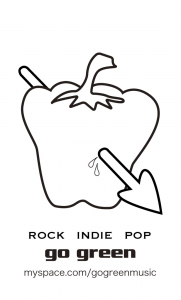In 2009, go green applied for the “UK Songwriting Contest” and received “Semi-Finalist” status. The songs were “Baby Smiley Smile” and “Fantastic Bloom”.
http://www.songwritingcontest.co.uk/
The second album “Floating on the Edge” was released in Mid-October 2010 via DIY label “SpunkTone” in Japan. The unique 11 tracks filled with many characters of time travel from 60s to 90s rock have created a brand-new world and the sounds easily leap the time and language (8 tracks in English, 2 in Japanese, 1 Both). It’s also available on CDBaby in the US and downloads on iTunes Store, Amazon MP3 etc.
http://www.cdbaby.com/cd/gogreen/
2009年、イギリスの「UK Songwriting Contest」に参加、「Semi-Finalist」に選ばれる。曲は「Baby Smiley Smile」「Fantastic Bloom」の2曲。
http://www.songwritingcontest.co.uk/
2枚目のアルバムとなる「Floating on the Edge(フローティング・オン・ジ・エッジ)」が2010年10月中旬に自主レーベルSpunkToneより日本でリリースされる。60年代から90年代のロックをタイムトラベルしたような、様々な顔を持つユニークな11曲は全く新しい世界を作り上げており、そのサウンドは時代や言葉も軽く飛び越える。CDはAmazon.co.jpほかCD通販サイトを中心に、ダウンロードはiTunes Store、Amazon MP3ほかで発売中。
http://www.amazon.co.jp/Floating-Edge-go-green/dp/B0044O047W/







